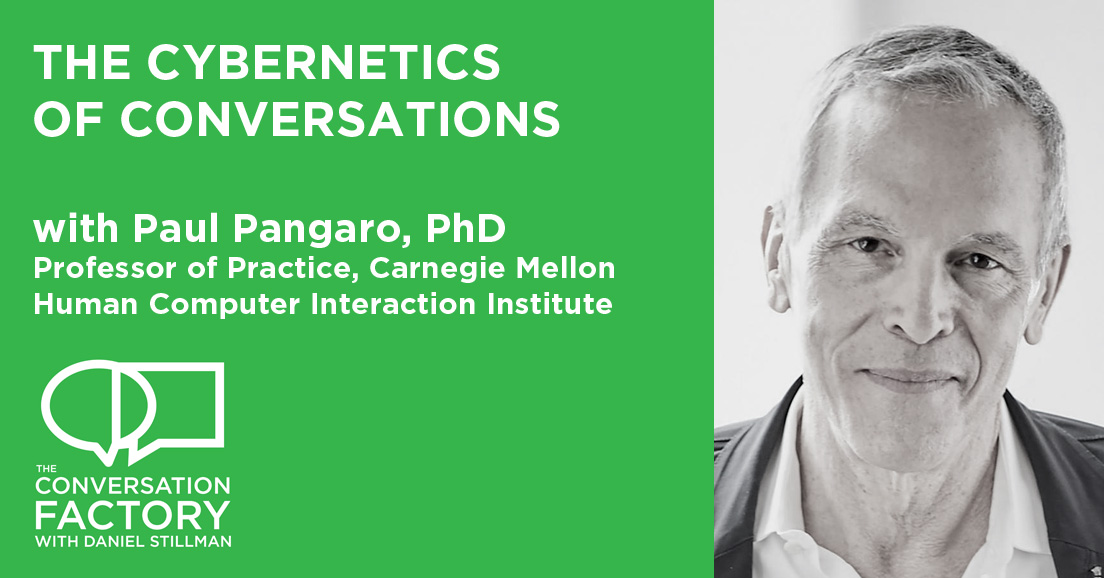So...Cybernetics. I was describing the ideas behind this episode to a friend and he was like "cybernetics is about steering?" And yep, it is. Check out the show notes for some essential links on cybernetics, *and* an essential diagram to help follow along with this episode.
The idea is this: You have goals and I have goals. If we're in conversation, the way we find a shared goal is through probing, experimentation, alignment on means, revision of the goals, mistakes...and recursion. The recursive process of seeing a goal, aiming for it, seeing the "error" or gap, and then moving to close the gap...that's cybernetics. And the principles of cybernetics really are a way to think about everything. Or, rather...anything that has a purpose, goals, intention. So, orgs that need to shift business models, teams that need to tighten timelines...getting your friends to pick a restaurant for next week...So, everything that really matters!
If you need people to agree on things before they can happen, you need cybernetics. And if you're good at getting people to agree, you're a solid cyberneticist. Or, in my language, an ace conversation designer.
In my journey through conversation design during this first year of the podcast, Dr. Paul Pangaro has been a rich guide and mentor, one of the people who sees the diverse ways that conversations shape the world, how systems can have purposes and goals....and in true conversational style, I've certainly been altered by his ideas. When I recorded this interview in 2017, Paul was the chair of the interaction design MFA at Detroit's College of Creative Studies. Currently (in 2019) he’s Professor of the Practice in the Human-Computer Interaction Institute at Carnegie Mellon University.
Paul got his BS from MIT, where he wound up getting hired by Nicholas Negroponte into a program that evolved into the MIT Media Lab. He then went on to get a PhD in Cybernetics in the UK and came into contact with Gordon Pask, a cybernetics and conversation design visionary, whose work Paul is still evolving and processing.
The application of cybernetics to conversation has been a mind-blower for me. It's helped me think about how to structure longer projects, design teams, and form powerful framing questions. That ability to frame a question in an invitational or motivating way, making it seem solvable without giving the solution...it's an amazing superpower to be able to kickstart an amazing conversation.
But asking that question designs the conversation, sets the stage for what comes next...and so I'm always cautious in my conversation designs to control for writing solo before group conversation flows...because whoever speaks first sets the stage for whatever comes next...they speak in response to what's been spoken already.
We talk about three big conversation design concepts that are worth paying attention to: how to think about group composition and cadence, the conversation with yourself in the past (time travel!), and the relationship between goals and play.
1. The group conversation. Do we have the right people in the room? Do we have enough diversity to answer the question at hand? Can we design a cadence of interaction that allows us to shift the question and the composition of the team in a responsive way? In Cybernetics, a system that wants to influence another system has to be at least as complex.
Is your team more complicated than the problem you're solving? Good!
But...who gets to frame the group and the cadence? How do we invite people into the group conversation? Who has the power to give permission?
2. The conversation between myself now and myself in the past through writing. I'm a fan of pen and ink...because as we write, we watch the ink flow and see our thoughts as they were moments ago as we move into the future. The act of sketching or writing allows us to witness our thoughts as they were and converse with them. Crazy right?
3. How established, shared goals allow us to play together, even become one. If we're dancing, a "form" helps us know our roles and goals. Are we dancing the Tango or a Waltz? Knowing this makes it possible to better respond to stimuli from our partners. I think that's why Agile/Design Thinking/Lean are so popular. With Parkinson's Law of ever-expanding work, there seem to be no rules anymore. We've broken partner dancing (starting with the twist) and now we never know what to do on the dance floor. Some of us crave for a throwback time, the swing era, the mystery of the tango...where we knew what to do, where there was more clarity. Agile, Scrum, Design Thinking...they are a dance form that makes it clearer what the roles and goals are. They're a game we can play if we know the rules and have a shared vocabulary.
When we share goals, the line between us blurs or dissolves. We live in "amity"...or you can draw a box around us and call us a system with a shared purpose: to dance!
So...this is the last episode of season one. It's been a year, 22 episodes, hours and hours of conversations in real-time, and many times that in listening and editing and writing about them. I've learned a ton and had a blast. I'm taking the holidays off and am working on season two! Stay tuned and enjoy the show.
Show notes and links:
Requisite Variety: On Paul's Site and Elsewhere
Ambiguity experiments - people start to break down when there's too much of it, blaming each other...it's exceeding our bandwidth (or requisite variety)
The Self Talk NYTimes article: When people repeated their tasks to themselves, they did it better, if it was a clear task. Also check out the Conversation Within Your Head.
Heinz von Foerster: If you desire to see, learn how to act
The Dhatupata: There's a lot less online about this than I thought there would be! The author is here, but deeper info is not. hmmm...

